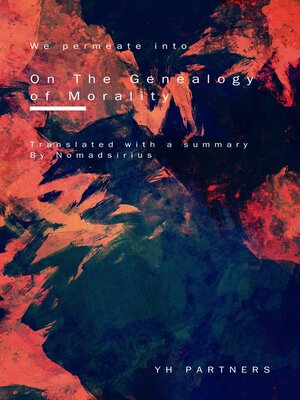
Sign up to save your library
With an OverDrive account, you can save your favorite libraries for at-a-glance information about availability. Find out more about OverDrive accounts.
Find this title in Libby, the library reading app by OverDrive.



Search for a digital library with this title
Title found at these libraries:
| Library Name | Distance |
|---|---|
| Loading... |
Prologue.
In 1887, at the age of 44, Nietzsche publishes 'The Genealogy of Morality'. It is a time of self-reflection called Little Snow of the Winter of Fate. He closes the period of classical literature and devotes himself to existential philosophy by experience. By contrasting slave morality and master morality with a genealogical methodology, good and evil are transformed into the moral values of good and bad. Goodness affirms and elevates life with an aristocratic will. Badness denies and degenerates life with slavish will. The moral concept of sin is derived not from a Christian point of view, but from the material concept of a debt owed by a debtor to a creditor. Cruelty is understood as a festival of self-affirmation overcoming the nihilism of self-contempt and self-denial. 'The Genealogy of Morality' is the concept of Ubermensch trying to create a new value by overcoming the reality of nihilism.







